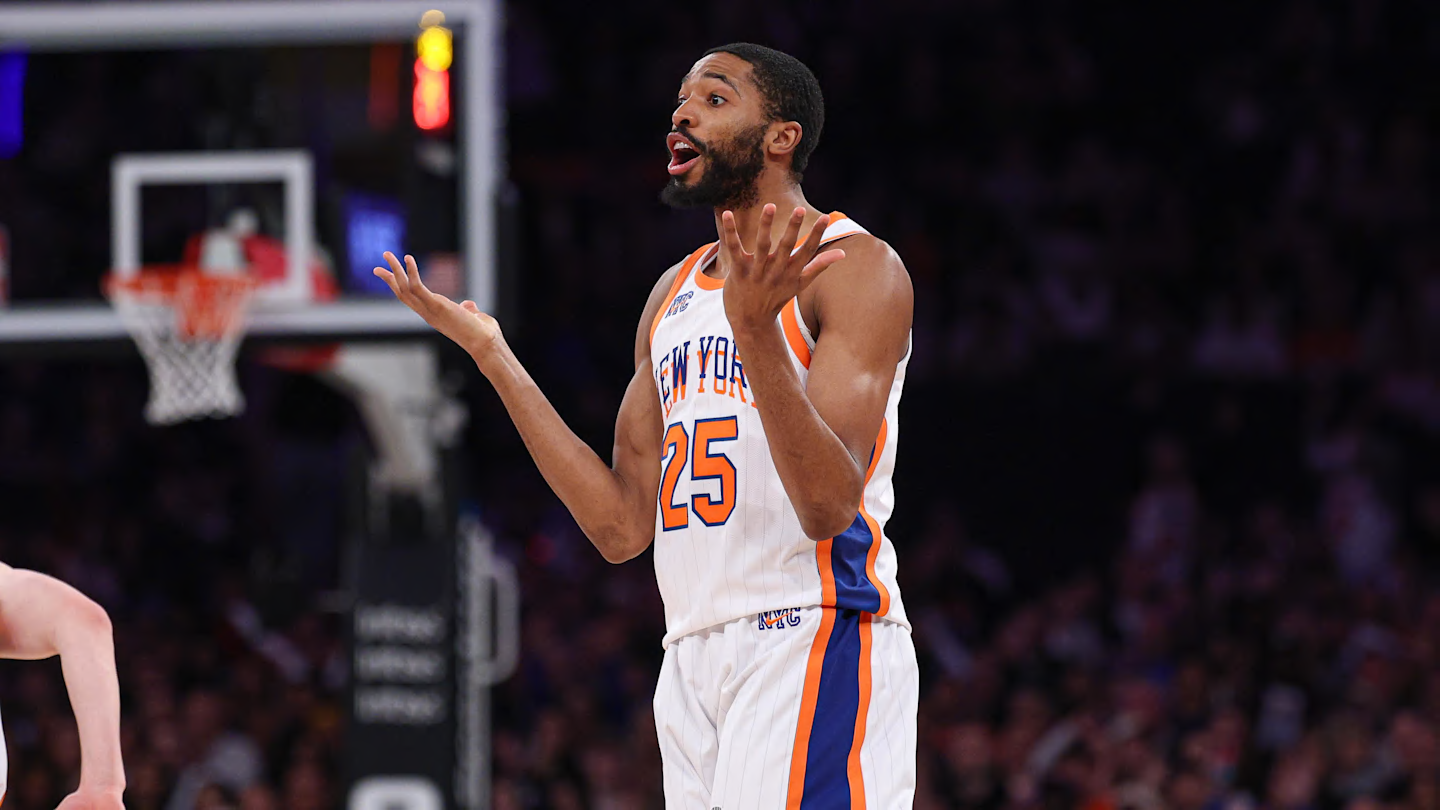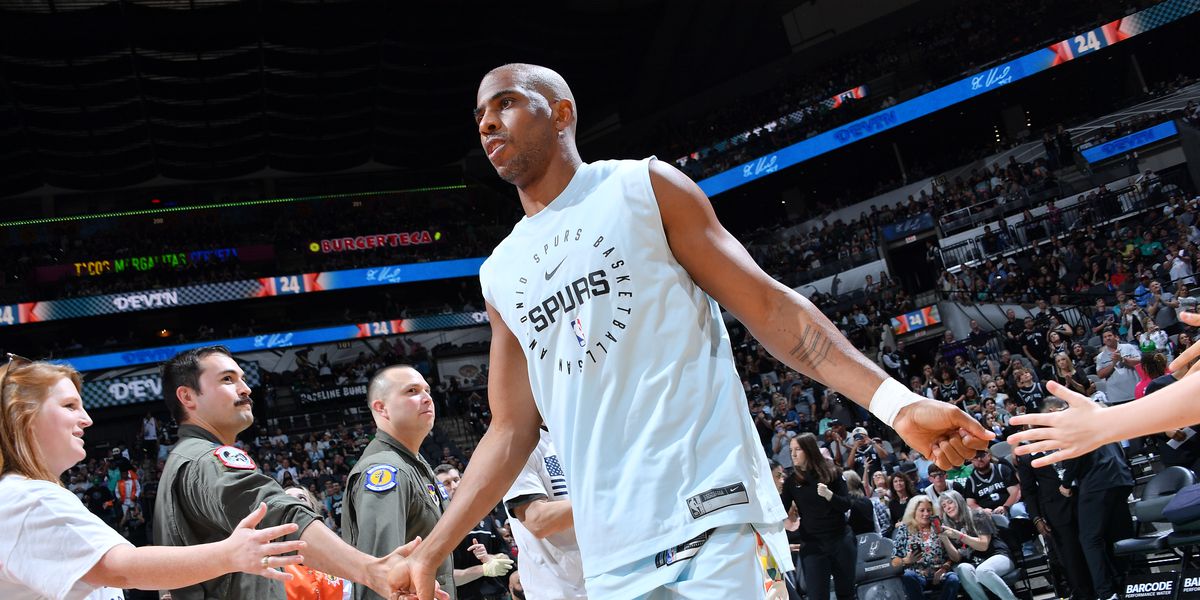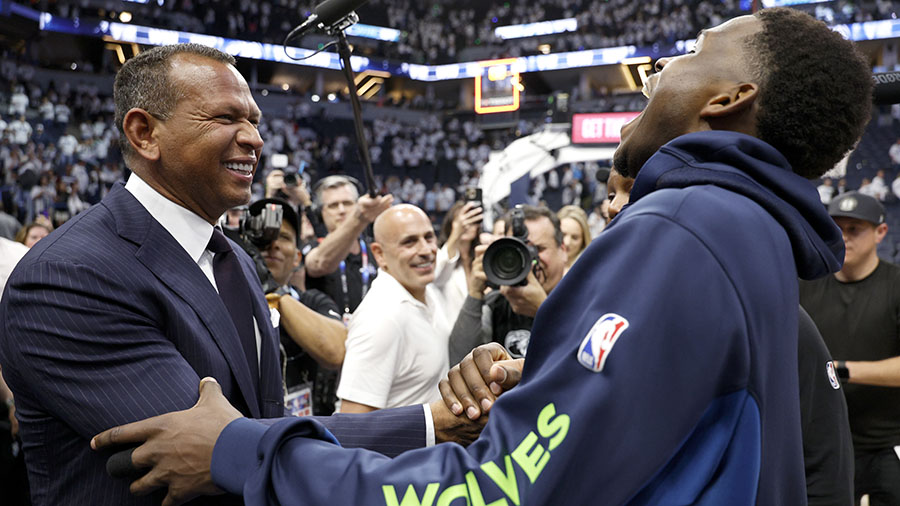It’s late March, and the race is on across the NBA.
There’s a scintillating battle for the MVP award between Nikola Jokić and Shai Gilgeous-Alexander. There are three teams in the Western Conference trying to get the No. 6 seed, the last spot that will allow them to avoid the Play-In Tournament. And there are three more teams fighting for the last two Play-In spots to keep their seasons alive.
Advertisement
But nothing — no, nothing — can match the chaotic energy of the NBA’s great tank. The race to the bottom is as good as ever. There are seven teams jostling with one another for positioning in the lottery when the ping-pong balls bounce around next month.
The Philadelphia 76ers need to get a top-six pick to keep it this June, or it goes to the Oklahoma City Thunder. But the Brooklyn Nets didn’t come this far just to get this far. They’re tied for the fifth-worst record in the league. The Utah Jazz and Washington Wizards are in an epic battle for the NBA’s worst record, the kind you read about only in J.R.R.Tolkien novels.
It would be endlessly entertaining if it weren’t also so tragic (full disclosure: it is still entertaining). Nearly a quarter of the league has a strong incentive to lose right now. That led one NBA executive to ponder earlier this month if the league again needed to do something to ward off tanking. Can anything be done to make teams out of the playoff race care more about winning during the last weeks and months of the season?
Who knows if the league office will do something. Its last change was tweaking the lottery odds and making it harder for the worst teams to win the top picks, as well as stretching out the power of the ping-pong balls to cover the top four picks. But some drafts, like the one this year with Cooper Flagg at the top, are deeper than others.
“There’s no doubt that incentives change at the end of a season, especially when you have a draft that’s perceived, not just with the top pick but the top maybe few picks of an incredibly strong draft. That’s a legitimate way of rebuilding in this league,” NBA commissioner Adam Silver said at the board of governors meeting last week. “I’m not sitting here saying here’s the new calibration to the draft lottery and that’ll solve it. We don’t have a new plan at the moment. We have a competition committee meeting tomorrow. We’re going to talk about it again, and I’m also very aware that at the end of the day, all the trappings around this league, what we’re ultimately selling is competition.”
Advertisement
It’s all right if Silver doesn’t have ideas. We do. Here are five ideas on what else the league can try to disincentivize tanking.
Extend the lottery drawing to determine the top-eight picks
If four is good, maybe eight is better. The NBA could let the lottery drawing determine the top-eight picks in the draft instead of just the top four.
It can flatten the odds even further. Right now, the eight worst teams have a collective 87.5 percent chance of landing the top pick, with the two worst teams each owning a 14 percent chance. But smash that together even more. What if the top-four teams each had a 10 percent chance and the teams outside the top eight had their odds increased? The team with the league’s worst record would be guaranteed to pick no lower than ninth in this scenario (currently, it’s fifth).
Is that a strong enough reason to care about winning games in February, March and April? Or at least not see wins as a bad thing. The whole point of this exercise is to have teams trying to win games late in the season and the lesser the potential punishment for doing so, the better. Then again, if only an 86 percent chance that one of the worst three teams won’t get the top pick and 72.6 percent chance they won’t get a top-two pick isn’t strong enough, maybe this won’t be either.

GO DEEPER
2025 NBA Draft Big Board: Derik Queen, V.J. Edgecombe rise among top 100 prospects
Get rid of the weighted lottery altogether
Let’s party like it’s 1985 again! Did you miss the playoffs by just one game? Were you a No. 7 seed who got eliminated in the Play-In Tournament? Well, now you have as good a chance to win the No. 1 pick as the worst team in the league.
Every non-playoff would have the same odds. It would be chaos. But think of the TV ratings for the lottery! Instead of just a few cities caring about the winner, you’d now have 14.
In all seriousness, this would be a pretty strong attempt to dissuade tanking. And even to stop the 2023 Dallas Mavericks of the world who have to pivot midseason and protect their first-round selection against the pick protections they’ve cornered themselves with. The choice would become binary — are we a playoff team or aren’t we? — and go from there. A team could still offer pick protections on a selection, but once it realizes it will miss the playoffs, there’s nothing to be done anymore but wait to see.
Advertisement
The downside is that it may keep some losing teams in a position where they can’t draw on top of the draft talent to get them out. Perhaps, but smart teams would adjust their team-building approaches and shape them to the new reality. And it might not be so bad if a team that just missed the playoffs lucks into a top pick. Good teams organically adding players with star potential can be fun and create a new pathway to juice championship potential. Heck, it might even make more teams willing to chase mediocrity and the bottom of the playoff seeding and know that if they were to miss, they would still have a chance to win the lottery. The unintended consequences are part of the fun.
Could we see a team straddling the playoffs line decide to call it off for the lottery instead? Maybe. But imagine the scorn it would get for choosing to miss the playoffs for a 7.1 percent chance at the top pick. Public-shaming can and should still work as a way to prevent undesirable behavior.
The lottery odds are based off multiple years of records, not just the last one
The NBA could take a lesson from the WNBA, where the teams in the lottery have their odds based on their record over a two-season span rather than just the immediate season. That changes the stakes of deciding whether to tank for a year, especially if you just made the playoffs the year before or weren’t flat-out awful, and it certainly makes it less necessary to lose every March and April game when 164 games will determine lottery odds instead of just 82.
Some teams might still commit to multi-year tank jobs. The Jazz have certainly committed to theirs for a while now. But then, you really have to commit to the bit, and not every ownership group or front office would be willing to write off multiple years as a lost cause. Giving away one season for a 14 percent chance at the No. 1 pick or a 52 percent chance at a top-four pick? OK, understood. You can sell hope to fans for a year. But two years? Or three years if a franchise wants repeat shots at the top of the draft? That’s a lot. At some point, fans zone-out. Ticket sales could suffer. Even the staunchest tank commanders could lose their will to fight the war.

GO DEEPER
2025 NBA mock draft: The Polarizing Express rolls through March
Take this season for example (yes, we can all agree to the stipulation that standings would look different if the rule were in place and teams could plan for multi-year lottery odds; just save yourself the time from hitting publish on the comment), Portland would still have the fifth-best odds at the top pick and wouldn’t have to feel bad about winning 32 games so far and being in a no-man’s land. Maybe we could even tweak the rules to let teams into the lottery regardless of whether they made the playoffs, which could create positive incentives for franchises like the Detroit Pistons, who turned it around this season but are still tied for the seventh-worst cumulative record since the start of last season. It could be worth a change.

(David Banks / Imagn Images)
The two worst teams get the No. 4 and No. 5 picks
Think about it. If the goal is to create incentives for teams to not be all-out horrible and to try to win games in March and April and treat them seriously, then ensuring that the worst teams don’t get the best lottery odds is one way to do it. If this were in place now, the Wizards and Jazz would be desperate to win games right now to avoid getting stuck with the No. 4 and No. 5 picks. They’d be trying to catch up to the Charlotte Hornets, who already have 18 wins. And Charlotte wouldn’t be resting on its laurels, either.
It’s an odd way of doing things, for sure, but by creating a strong deterrent to be the worst teams in the NBA, it could prod teams to be more strategic and to focus more on winning games, and it would make March and April entertaining because the incentive structure for teams at the bottom of the standings has flipped. Maybe we’ll see the bottom of the NBA get better every season as a result, knowing that those teams have to build strong enough rosters to live under this new rule.
Advertisement
Just get rid of the draft
We’ve discussed a lot of ways to fix the draft and the lottery, and that’s all fine and dandy. But what if the NBA just got rid of it? Can’t tank if there’s nothing to tank for.
This is obviously an aggressive move, but it could be just what the league needs. It could get rid of the draft and allow each team a capped amount of money it can spend on incoming players each offseason. That would put agency back into the hands of players and allow teams to define their rookie classes however they want.
If this happened this year, would Cooper Flagg want to sign with his hometown Boston Celtics and be a rookie scrapping for minutes on a title-contending team or stay in North Carolina and sign with the Hornets, where he can be the centerpiece of a franchise? Would a team want to invest most of its money in a player that it believes is 10th on its board or dice up its allocated money on several players to take more opportunities it can hit on one?

GO DEEPER
‘He put us on his back’: Cooper Flagg’s complete performance sends Duke to Elite Eight
It could force teams to be more competitive, not just because there is no need to tank anymore, but because it would want to present itself as a strong landing spot in recruiting incoming players. There’s a reason top high-school recruits don’t want to go to losing programs; would that be so different in the NBA?
There are tweaks to be made to this system, as well. The NBA could allow teams to trade some of their available spending money to others in return for future money or for players. It could cap how many players can be signed in one offseason. It could cap nothing at all.
This would change all transaction cycles, too. Since so many trades are predicated on draft picks and future draft considerations, teams would have to figure out how to re-value players in trades and how to make deals. Would it change how frequently star players get traded if teams can’t trade for potential lottery picks in exchange and narrow their path to rebuilding their team? Who knows.
It would usher in a whole new way of player procurement, and it would be fascinating to see how teams and players would handle it. It would give the NBA, essentially, a second free-agent period and make itself a bigger part of the sports calendar.
(Photo: Chris Schwegler /NBAE via Getty Images)



